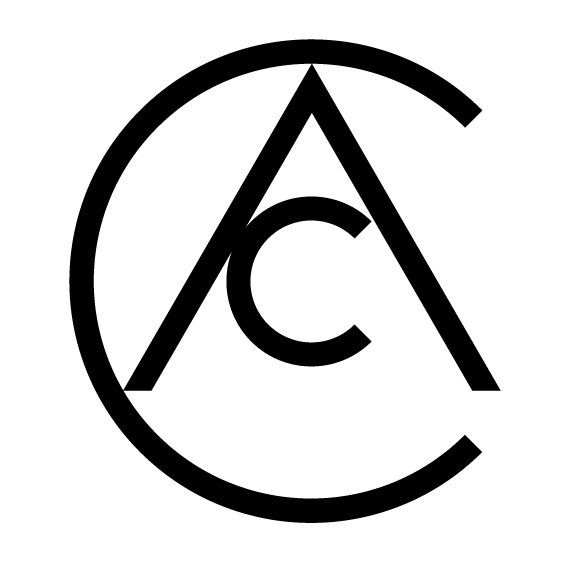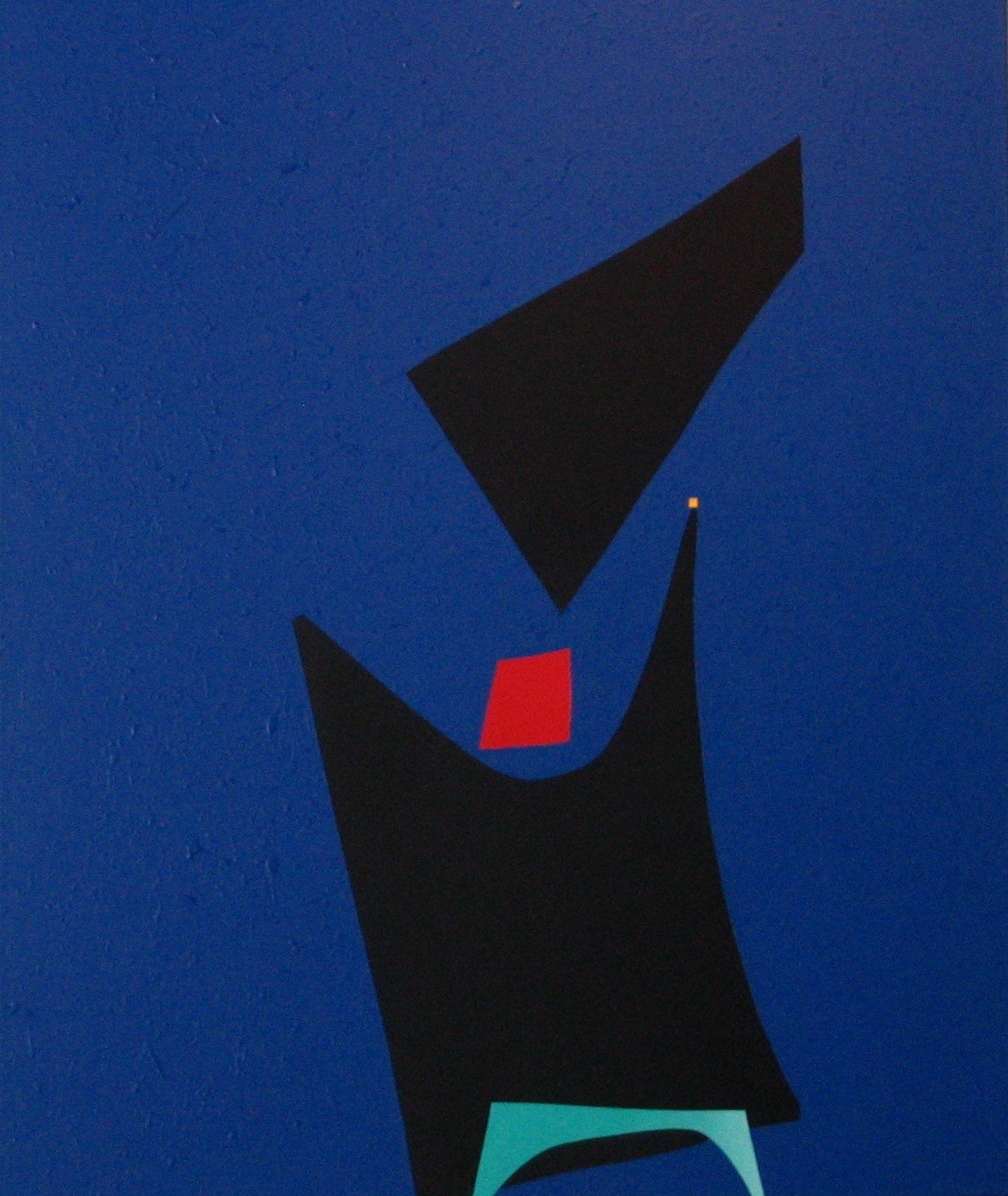Josef Kursky
In the luminous cobalt blue worlds created by Josef Kursky, the viewer is invited to step into a dimension of abstraction that evokes both a sense of mystery and a harmonious symphony of color, texture, and form. Kursky, a Czech-born, Toronto-based artist, has crafted a distinctive visual language that transcends the ordinary, offering a unique perspective within the contemporary art scene. Through his works, he deftly balances structure and spontaneity, creating a visual philosophy that reverberates with echoes of the modernist masters, while charting a path distinctly his own.
At the heart of Kursky's artistry lies his stated intention to "go beyond the obvious and present a glimpse of the extraordinary." This guiding philosophy is manifest in every bold geometric shape and textured surface of his work. Kursky's paintings resonate with a profound understanding of balance and contrast. Each form is meticulously placed, its relationship to the others deliberate and harmonious. The precision of his compositions suggests an almost architectural rigor, while their playfulness and vibrancy evoke the improvisational quality of jazz. In his own words, "each color speaks to the next component in singular unity," and this interrelation gives his art its compelling dynamism.
Take a look at "Midnight Snack I" and "Midnight Snack II", where Kursky orchestrates a cascade of bold shapes and colors. The inky black vertical lines that dominate the compositions stand in striking contrast to the vibrant planes of red, yellow, and teal. These pieces seem to riff on the idea of modernist collage, their layers revealing a dynamic interplay between flatness and depth. The textured cobalt blue backgrounds act as a unifying canvas, providing a celestial stage for the geometric drama to unfold. This is abstraction at its most alive—an art form that refuses to be static, continually engaging the viewer in new conversations with every glance.
In comparing Kursky to a historical master, one might find kinship between his work and that of Kazimir Malevich, the pioneer of Suprematism. Like Malevich, Kursky has a keen interest in the reduction of form to its essentials. However, while Malevich sought to obliterate the material world in favor of pure spirituality, Kursky’s abstractions are deeply rooted in the physicality of their making. The layered textures and tactile quality of his works suggest a profound respect for the materiality of paint and canvas. Kursky's art is imbued with a contemporary sensibility that bridges the gap between modernism and the digital age. His precise forms and bold use of color seem almost algorithmic in their precision, yet their emotional resonance is unmistakably human.
This duality—between the mechanical and the organic—is evident in "An Unexpected Daybreak". Here, a dramatic diagonal slice of silver interrupts the composition, its metallic sheen evoking the cold light of dawn. Beneath it, a vibrant gradient of red, yellow, and green suggests a spectrum of possibilities, a burst of vitality that breaks through the subdued backdrop. This tension between restraint and exuberance is a hallmark of Kursky's work, and it is what makes his art so profoundly compelling.
Kursky's accolades speak to his growing prominence in the art world. In 2021, he was a finalist in the Abstract Art category at the prestigious Global Art Awards in Tokyo, Japan. More recently, in 2024, he garnered international acclaim by winning both the Botticelli International Prize in Florence and the Leonardo da Vinci International Prize in Milan. These honors place Kursky among the luminaries of contemporary abstraction, affirming his place as a significant voice in the global art dialogue.
In "Night Shift IV" and "Night Shift V", Kursky explores the interplay of light and shadow with a depth that is almost cinematic. The stark black forms that traverse the compositions are like sentinels in a nocturnal landscape, their rigidity softened by the surrounding fields of blue and green. These works exemplify Kursky's ability to create mood and atmosphere through abstraction, demonstrating that even the simplest forms can evoke complex emotional responses.
Meanwhile, "Out of the Blue III" takes a more playful approach. Here, the forms are less rigid, their curves and angles suggesting movement and transformation. The use of negative space is particularly striking, as the cobalt blue background becomes as much a part of the composition as the shapes that punctuate it. This piece highlights Kursky’s mastery of composition, his ability to guide the viewer's eye through the canvas with a sense of rhythm and flow.
In "Peek-a-Boo" and "The Glimpse II", Kursky's work takes on a more enigmatic quality. These pieces invite the viewer to engage in a kind of visual hide-and-seek, as forms emerge and recede within the layered compositions. The interplay of transparency and opacity adds a sense of depth and mystery, challenging the viewer to decipher the relationships between the elements. These works exemplify Kursky's belief that "each shape must be precisely placed to harmonize with the others," as every component feels both autonomous and integral to the whole.
What sets Kursky apart from his contemporaries is his ability to infuse his abstractions with a profound sense of narrative and emotion. His works are not just exercises in form and color; they are meditations on harmony, balance, and the interplay of forces—light and dark, order and chaos, the individual and the collective. His art speaks to a universal language, one that transcends cultural and linguistic barriers to touch the core of human experience.
Kursky's background in graphic design and illustration lends his work a sense of clarity and precision that is rare in the world of fine art. His compositions are meticulously constructed, yet they never feel rigid or contrived. Instead, they exude a sense of freedom and spontaneity that is both invigorating and inspiring. This combination of discipline and playfulness is what makes his art so uniquely compelling.
As an artist who has exhibited widely in Europe and Canada, Kursky's influence extends far beyond his adopted home of Toronto. His works are held in private and corporate collections around the world, a testament to their universal appeal. And yet, despite his success, Kursky remains dedicated to his craft, continually pushing the boundaries of what abstraction can achieve.
Josef Kursky is a rare talent, a contemporary artist who combines technical mastery with a deep philosophical engagement with his medium. His works are not only visually stunning but also intellectually and emotionally engaging, offering a glimpse into a world where color, form, and texture converge in perfect harmony. In a time when abstraction can often feel detached and impersonal, Kursky's art reminds us of the power of visual language to connect, to inspire, and to transcend.
In the lineage of great modernists like Kazimir Malevich, Josef Kursky stands as a torchbearer for the future of abstraction. His work is a celebration of possibility, a testament to the enduring power of art to reveal the extraordinary within the everyday. As the accolades and recognition continue to mount, one thing is clear: Josef Kursky is not just a significant figure in contemporary art—he is a visionary, charting a course for abstraction that is as bold and original as the works themselves.
Kursky's contribution to contemporary art lies in his ability to create compositions that are as cerebral as they are visceral. His paintings challenge the viewer to think beyond the surface while simultaneously drawing them into a world of pure aesthetic pleasure. His dedication to perfecting the balance of form, color, and texture elevates his art to a realm that is both timeless and distinctly modern. Kursky’s work invites us to engage with abstraction not as a departure from reality but as a deeper understanding of it, a lens through which we can explore the essence of existence. It is this quality—the ability to make the intangible tangible—that ensures Josef Kursky’s enduring legacy in the annals of art history. As a bridge between the artistic traditions of the past and the uncharted territories of the future, Kursky continues to redefine what it means to create and to see.
By Marta Puig
Editor Contemporary Art Curator Magazine
Midnight Snack I., acrylic on canvas, 122x102cm
Midnight Snack II., acrylic on canvas, 122x102cm
An Unexpected Daybreak, acrylic on canvas, 122x102cm
Midnight Snack III., acrylic on canvas, 122x102cm
Night Shift IV., acrylic on canvas, 122x102cm
Night Shift V., acrylic on canvas, 122x102cm
Peak-a-Boo, acrylic on canvas, 122x102cm
Out of the Blue III., acrylic on canvas, 61x61 cm
Out of the Blue II., acrylic on canvas, 61x61 cm
The Glimpse II., acrylic on canvas, 30x30 cm













